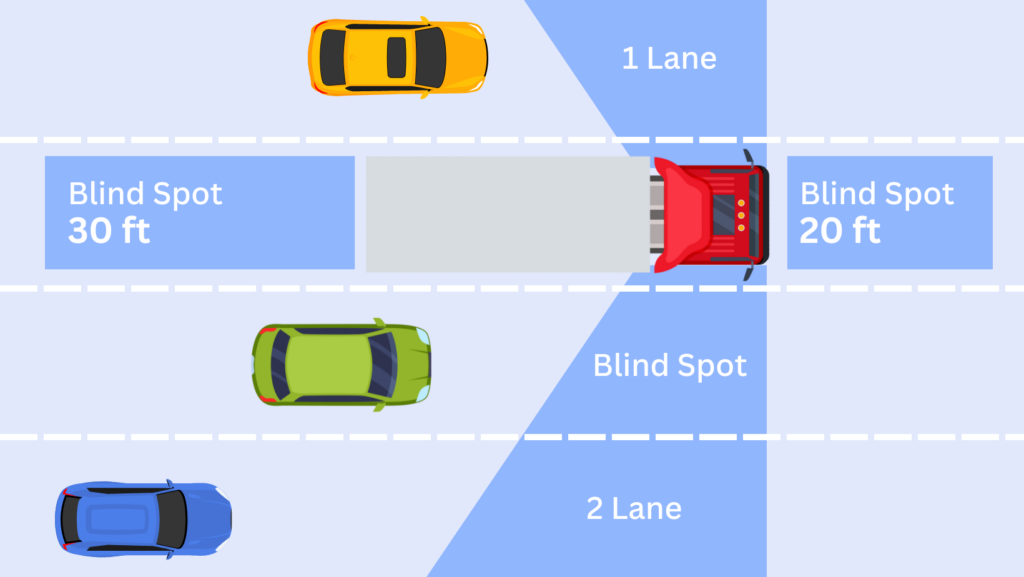Safe Driving Tips For Truck Drivers

Truck driving is one of the most challenging and high-risk professions, requiring skill, focus, and strict adherence to safety protocols. Ensuring drivers stay vigilant and prepared can prevent accidents, protect lives, and keep operations running smoothly.
By following and sharing these 19 essential truck driver safety tips, your team can stay safe, reduce risks, and promote a culture of responsible driving.
Truck Driver Safety Tips
1. Pre-Trip Inspection
Did you know that 30% of truck crashes are caused by mechanical failures? Before starting any trip, check your brakes, tires, lights, mirrors, and cargo security. Identifying and fixing small issues before hitting the road can prevent dangerous breakdowns and costly accidents.
2. Always Buckle Up
Wearing a seatbelt is one of the simplest ways to stay safe. Seat belts save nearly 15,000 lives annually and reduce the risk of fatal injury by 45%. No matter how short the trip, always buckle up. In a rollover accident, a seatbelt can mean the difference between survival and ejection from the vehicle.
3. Plan Your Route
Poor route planning can lead to unnecessary stress, missed rest stops, and unexpected detours. Before starting your trip, check for construction zones, weather conditions, low-clearance bridges, and weight restrictions.
4. Keep Your Speed in Check
Speeding is a major factor in truck accidents, contributing to 23% of all large truck crashes. Driving too fast reduces reaction time and increases stopping distances, especially on wet or icy roads.
5. Maintain a Safe Following Distance
Rear-end collisions account for 22% of truck-related crashes. Large trucks need significantly more time to stop compared to smaller vehicles. The recommended following distance is at least seven seconds, and more in bad weather or heavy traffic.

6. Take Regular Breaks
Fatigue is a silent killer, contributing to 13% of truck crashes. Following Hours of Service (HOS) regulations is essential for staying alert and reducing drowsiness.
7. Drive Defensively
Many truck crashes happen because other drivers make sudden, unpredictable moves. Defensive driving means staying aware of your surroundings, anticipating potential hazards, and always having an escape plan. Watch for aggressive drivers, sudden lane changes, and distracted motorists.
8. Use Your Turn Signals
48% of crashes involving large trucks occur due to improper lane changes. Using turn signals well in advance of lane changes or turns allows other drivers to react accordingly. Before merging, always check mirrors and blind spots.
9. Stay Focused
Distracted driving is a growing problem, causing thousands of deaths and injuries every year. Taking your eyes off the road for even a few seconds can have deadly consequences. Truckers should avoid texting, eating, or adjusting the radio while driving.
10. Check Blind Spots
Trucks have large blind spots, and assuming that other drivers see you is a mistake. More than one-third of fatal crashes involving trucks occur due to blind spots. Always check mirrors, use turn signals, and make gradual lane changes.

11. Understand the Importance of Safety Technology
Safety technology is a game-changer for truck drivers’ safety. Tools like collision avoidance systems, lane departure warnings, dash cams, and MVR Monitoring are crucial in preventing accidents and improving overall safety.
Read more: Best Driver Behavior Monitoring System To Detect Risky Driving
12. Adjust to Weather Conditions
Rain, fog, snow, and ice require extra caution. Slow down, increase your following distance, and turn on your headlights.
13. Stay Hydrated and Eat Healthy
Long hours on the road can lead to dehydration and fatigue, making it harder to stay alert. Drinking plenty of water and choosing nutritious meals instead of high-sugar, high-fat snacks can improve focus and energy levels.
14. Avoid Road Rage
Aggressive driving and road rage can escalate dangerous situations. If another driver is acting recklessly, don’t engage—let them pass, stay calm, and maintain your focus. If necessary, report dangerous drivers to authorities rather than taking matters into your own hands.
15. Watch for Work Zones
Construction zones present unique dangers, including narrow lanes, reduced speed limits, and unpredictable traffic patterns. Nearly one-third of fatal work zone crashes involve large trucks. Slow down, be alert for workers, and be prepared to stop suddenly.
16. Secure Your Cargo Properly
Shifting or falling cargo can make a truck unstable and increase the risk of rollovers. Overloaded or improperly secured cargo has caused multiple fatal crashes. Before hitting the road, ensure that cargo is evenly distributed and tightly secured.
17. Use Your Horn Sparingly
While the horn is a useful tool, excessive honking can startle other drivers and cause panic. Use it only when necessary to alert others of your presence in a potentially dangerous situation.
18. Avoid Aggressive Driving
Aggressive behaviors like tailgating, rapid lane changes, and excessive speeding greatly increase the risk of crashes. Staying calm and following defensive driving techniques can help prevent road incidents.
19. Always Be Prepared for Emergencies
Carrying an emergency kit with basic tools, extra food, water, a flashlight, and first-aid supplies can be a lifesaver in case of unexpected breakdowns or long delays. Being prepared for the unexpected ensures safety and peace of mind on the road.
When it comes to safety, there’s never enough talk or preparation. Every mile on the road presents new challenges, and staying proactive is the key to preventing accidents. By following and sharing these safety tips, staying alert, and utilizing safety tools, truck drivers can minimize risks, protect their livelihoods, and ensure safer roads for everyone.
Need help mitigating driver risk? At Embark Safety, we provide MVR Monitoring and compliance solutions to help fleets identify risky drivers before accidents happen. Stay ahead of violations, reduce liabilities, and improve safety effortlessly. Contact us to learn more or book a demo.
*We are not lawyers. Consult with your legal counsel to ensure your processes and procedures meet/ or exceed safety standards and compliance regulations. Please read our legal disclaimer.






